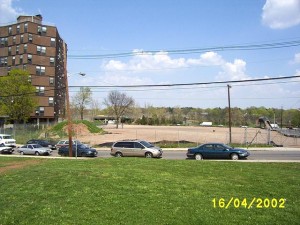“Realistic Opportunity?” The Distribution of Affordable Housing and Jobs in New Jersey
To achieve the state’s goal of an equitable distribution of affordable housing and to ensure that places with large or growing numbers of jobs also offer adequate amounts of housing affordable to all workers, New Jersey needs to overhaul its housing policy. In its separation of workers from jobs, the present geographic distribution of affordable housing has important implications for New Jersey’s economy. Currently, households in need of affordable housing are effectively restricted in their residential choices to a small handful of municipalities, while new job opportunities are being created elsewhere:
- The distribution of affordable housing in New Jersey is conspicuously skewed. A mere 12 municipalities together account for more than 50 percent of the statewide inventory of affordable housing, while comprising only 14 percent of the state’s total households. In contrast, 246 municipalities have no affordable units at all, among them 51 municipalities whose affordable housing plans have been certified by the Council on Affordable Housing.
- Most municipalities hosting large numbers of jobs do not have accompanying supplies of affordable housing. Of the 38 municipalities having at least 20,000 jobs in 1999, less than a third (12) provide affordable units in proportion to their share of employment.
- Communities that host large numbers of both jobs and affordable housing tend to be losing jobs. Of the 101 municipalities with 1999 employment exceeding 10,000, there are only 22 that have a proportional share of affordable units relative to their share of total employment. As a group, these 22 places lost more than 25,000 private-sector jobs between 1990 and 1999, compared to a statewide job gain of about 175,000.
- Most job growth is occurring in communities that do not have corresponding supplies of affordable housing. The 46 municipalities that gained 2,000 or more private-sector jobs between 1990 and 1999 together account for 24.8 percent of total 1999 statewide employment but only 15.7 percent of the total statewide affordable housing unit inventory. Remove just a single municipality – Jersey City – from the analysis, and the discrepancy grows even more dramatic, with the other 45 large job gainers accounting for 22.3 percent of statewide employment but only 8.4 percent of statewide affordable units.
- Regional Contribution Agreements (RCAs) make the problem worse by allowing job growth municipalities to pay other communities to create affordable housing units
distant from the new jobs. Among the 46 large job-gaining municipalities between 1990 and 1999, there are 20 RCA “senders” that posted a collective private-sector job increase of 100,371. At the same time, they paid other municipalities to build a total of 2,586 affordable units, a number that, if actually built within the 20 sender municipalities, would have made their combined inventory of affordable units more than 50 percent larger.
If the conditions that perpetuate and intensify the need for affordable housing – chronic, concentrated poverty and disappearing jobs – are ever to be ameliorated, it is critical that lowerincome households have a realistic opportunity to access growing communities with new jobs. The state could accomplish this by adopting a “growth share” approach, linking the creation of affordable housing to commercial and market-rate residential development, and by abolishing RCAs, which serve only to further institutionalize the concentration of poverty.
Download report:
Realistic Opportunity? The Distribution of Affordable Housing and Jobs in New Jersey (PDF)












